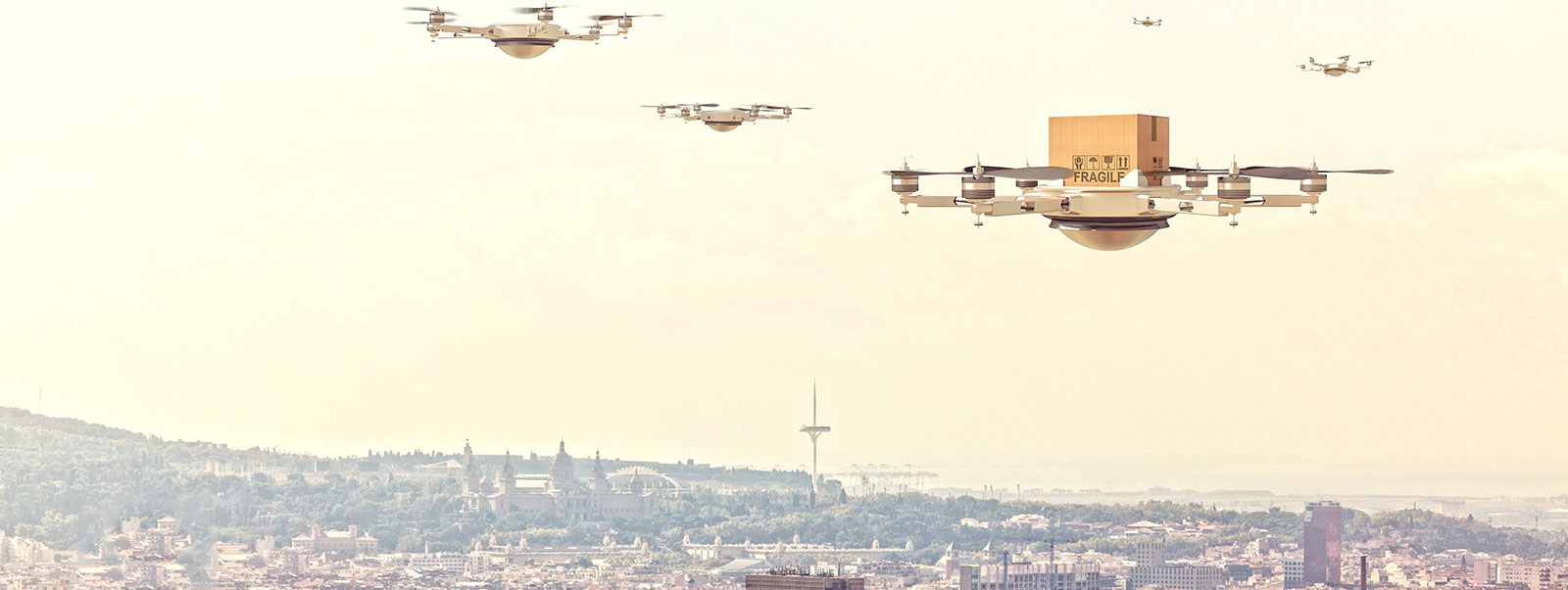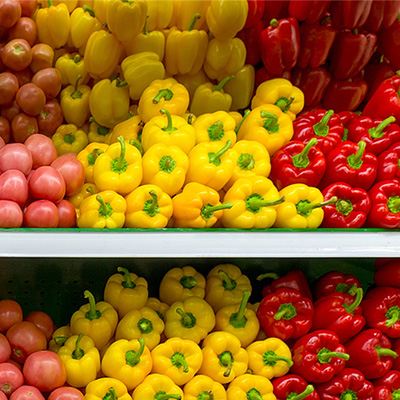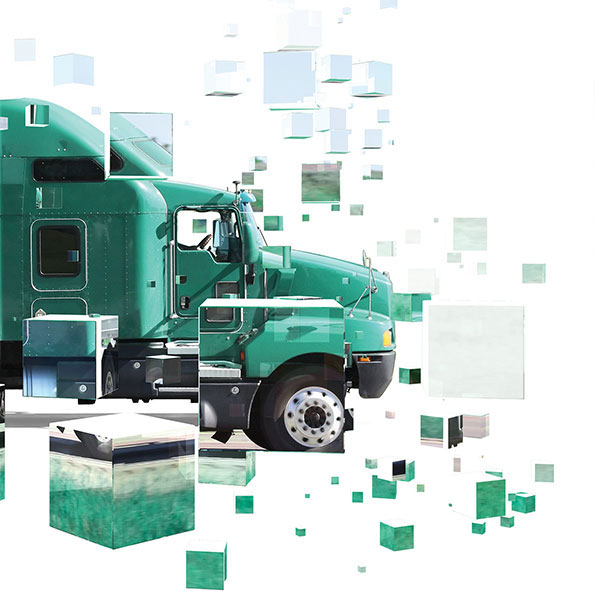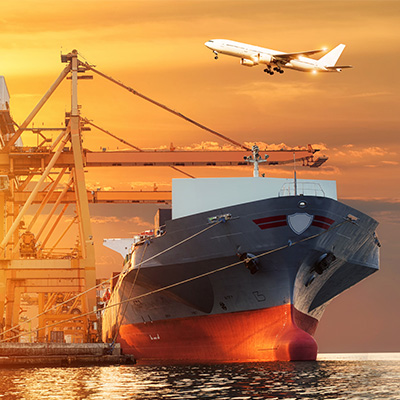By Michael Lierow and Cornelius Herzog
This article first appeared in Forbes on August 7, 2017.
Consumers today are motivated by convenience when it comes to purchases of products or services – getting what they want, when and where they want it. Couple this with the digitalization of the supply chain and the prospects for artificial intelligence, and a vision of the future of delivery logistics begins to take shape.
As the focus of delivery logistics increasingly shifts toward customer data, connectivity, and operational flexibility, market entry will become easier for hungry tech disruptors
This future will be more asset-light and agile, compared to the asset-intensive operations of today’s major logistics companies, with their fleets of trucks and planes. And as the focus of delivery logistics increasingly shifts toward customer data, connectivity, and operational flexibility, market entry will become easier for hungry tech disruptors.
A key enabler of these changes will be the development of “meta-platforms” – massively wide, deep, and intelligent computing environments that give logistics companies the capability to interact with disparate and rapidly changing operating systems, software, and apps. More importantly, they allow companies to service their customers as seamlessly across company boundaries as they do across country boundaries.
These meta-platforms are not likely to be directly visible to the end customers. Instead, they will steer the logistics flow of products on the operations side, while ensuring that operations is well connected to the sales side – where customer preference data resides.
Driven by data
Meta-platforms are thus at the heart of future delivery logistics systems, and even today’s early adopter meta-platforms – such as Amazon’s – have proven to be a road to industry dominance. In Amazon's case, its meta-platform provides customers with transparency into order status and integrates downstream delivery partners, but as yet does not enable customers to make last minute changes to where and when shipments will be delivered, nor does it fully integrate upstream and downstream transportation options.
Through the use of meta-platforms, networks that were once established to simply push goods through at the lowest possible cost will be able to evolve to offer customized solutions that reflect customer priorities. Thus, for example, it will soon be possible for an automatic alert from a plane in-flight to coordinate getting a spare part from one place and a mechanic from another standing at the ready to service the plane landing at a third location, without disrupting the airline’s schedule. Or, an overnight shipment headed to one factory will be able to be rerouted while en route, based on a sudden need at another factory, and still arrive on time.
As meta-platforms evolve to incorporate more big data analytics and machine learning, layers upon layers of customer data will drive their competitive value. Goods will be routable depending not just on the geography of the destination, but numerous other factors. For example, does the delivery involve a VIP customer? Was it a discount sale? Are there other purchases that should be bundled together? Some of this happens now, but it takes considerable human intervention, which slows down the process and carries a higher risk of errors. In the future, deliveries will be channeled automatically by technology that can make decisions efficiently and quickly.
Meta-platforms are thus at the heart of future delivery logistics systems, and even today’s early adopter meta-platforms – such as Amazon’s – have proven to be a road to industry dominance
Pushing personalization
Once meta-platforms are able to reach out to customers and report back their delivery needs and expectations in real time, sales platforms will no longer be able to offer just a few generic options and hope they cover a customer’s situation. If a buyer doesn’t need same-day delivery, then offering it isn't of value to that customer. Instead, the customer might want to be able to change the destination of the package at any time. Ultimately, the ability to deliver on that promise may determine which company gets the business.
This emphasis on data and customer knowledge is why an enterprise such as Amazon has been able to outflank more established logistics companies. Like many other technology-based disruptors, Amazon focuses on getting to know as much about each customer as possible. This is true for Google as well, which is the reason why both of these companies have been able to integrate themselves so easily into the supply chains of many different industries.
This transition has taken away the advantage traditional logistics suppliers once had from offering a broad network of delivery vehicles and has attracted a raft of digital natives to the space. Even Amazon, which has always been involved in logistics, continues to create smaller, more nimble operations, such as Amazon Fresh and Amazon One, to perfect logistics for various industries. Traditional logistics suppliers will find it challenging to follow suit unless they understand the importance of flexibility and develop the same levels of connectivity and data analytics.
With meta-platforms as an enabler, the future of delivery logistics will involve diverse solutions accommodating diverse needs
Drones, robots and data, oh my
With meta-platforms as an enabler, the future of delivery logistics will involve diverse solutions accommodating diverse needs. Some of this future is already being beta-tested, such as locker stations with roofs that accommodate drone delivery of packages (a conveyor belt takes packages the final few feet to customers’ lockers), or apps that allow customers to re-route packages mid-delivery. In some European and US cities, remote-controlled, delivery-cart robots now share the sidewalks with humans.
Advances in data science will be required, however, to make this future fully a reality. Just having terabytes upon terabytes of data isn’t enough, if it’s sitting in 20 different databases scattered across the supply chain. Delivery systems with high volume fluctuation will need five critical enablers: connected data along the entire value chain, dynamic planning, agile networks, enhanced channel management, and open platforms integrating all channels with customer interfaces.
Equally key will be the further development of nascent technologies. For example, 3D printing will allow the production of spare parts and products closer to the customer and faster customization. Augmented (virtual) reality could help reduce returns by allowing customers to make better choices when they order by providing three-dimensional modeling and interactivity.
Ultimately, thanks in large part to the connectivity enabled by meta-platforms, most of us won’t even recognize delivery logistics a decade from now: Fleets of drones buzzing by as they deliver and pick up packages, mobile lockers driving autonomously through cities, and robots cruising down neighborhood sidewalks on quick trips from local stores. Incorporating all of these new ways of operating may require companies to seek out partners or even crowdsource solutions, but simply standing still will no longer be an option.









